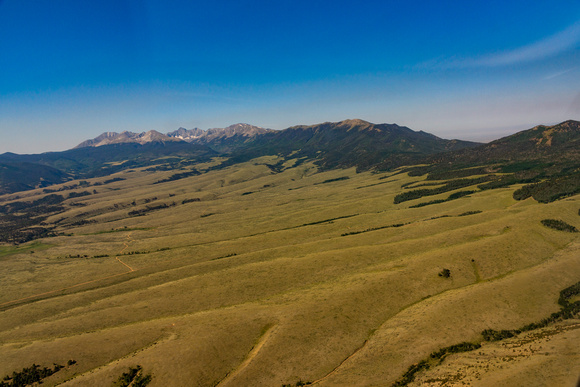In good news for outdoor enthusiasts and community members in the Huerfano River Valley, the latest round of oil and gas leasing does not include public lands mere miles from Great Sand Dunes National Park in the remote Huerfano Valley.
The decision followed demands from Huerfano County residents that concerns about oil and gas production in the area be taken seriously and a failure by the Bureau of Land Management to consult with the Navajo Nation about the plans.
The complex geology of the valley makes it likely that drilling could lead to the contamination of the community’s only water source. Also among the lands at risk were areas purchased by the Navajo Nation for use for special ceremonies, food subsistence, and recreation. This includes unobstructed views of Sisnaajini (Blanca Peak), one of four sacred mountains of the Navajo people.
Yet instead of initially heeding these concerns, the Bureau of Land Management -- under Interior Secretary Zinke’s department guidance, moved forward with a mandated "expedited environmental review process." Requests from community members, the Huerfano County Commision, and even the Environmental Protection Agency for a hydraulic study to ensure water safety were refused and public comment was very limited. Tribal consultation never happened.
Despite the abbreviated opportunity for input, more than 4,000 people submitted comments in opposition to the lease sale and more than two dozen news stories on the ill-conceived plans raised the profile of what was at risk.
Nearby Great Sand Dunes National Park and Preserve is an otherwise protected sea of sand dunes nestled beneath snow capped mountains. Under it’s so-called “energy dominance mandate,” the Department of the Interior put up 11 land parcels for auction in Huerfano County, no more than eight miles east of Great Sand Dunes National Park and Preserve, with one parcel less than a mile away. All of the parcels for auction are also within spitting distance of the Sangre de Cristo Wilderness, with one parcel directly adjacent to a roadless area known for its unique wildness. This area has fragile ecosystems, important wildlife species, and a growing tourism based economy that drilling would put at significant risk.
Great Sand Dunes National Park has perfect conditions for a dark night sky and quiet solitude. Tourists from all around the world visit the park to stargaze at the endless expanse of stars and appreciate an escape from the hustle and bustle of daily life.
All of the parcels under consideration overlap very important habitat for elk and mule deer, including their winter concentration areas, severe winter range, and calving and fawning areas critical to the wildlife population’s health. One parcel overlaps a significant portion of land set aside as a conservation easement through the Rocky Mountain Elk Foundation.
Six of the parcels are within Wolf Springs Ranch, part of the Colorado Parks and Wildlife Ranching for Wildlife program that was partially purchased by the Diné (Navajo) Nation.
If these parcels were sold to the oil and gas industry, it would be a license for hazardous machinery to create a patchwork of destruction across our public lands and important ancestral lands to Tribal Nations. It would disrupt the migration patterns of elk, deer, and other iconic Colorado wildlife. Thunderous drilling rigs would shake the earth above burrowing marmots and owls. Unique dark sky views would be polluted, and the solitude found in this area would be disturbed. Dangerous pollution would be sent into the air and water vital to the local community of rural farmers and ranchers.
Thankfully, the Bureau of Land Management finally slowed down and deferred these leases from its September lease sale. Unfortunately, a deferral doesn’t mean the leases won’t be back for sale at a later date. The Sierra Club is prepared to work alongside the local community and Tribal Nations in demanding a moratorium on the sale of these leases to oil and gas drilling until the Bureau of Land Management has adequately updated its planning process to include the health, environmental, spiritual, and cultural impacts of industrialized drilling, has addressed concerns raised by the Huerfano County Commissioners and EPA, and has genuinely participated in meaningful consultation with the Navajo Nation.
